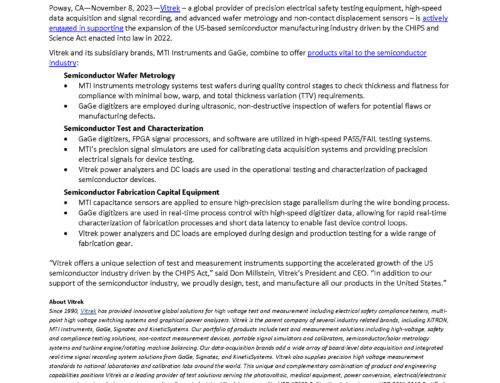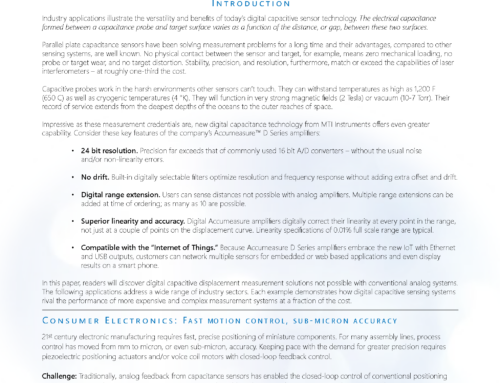Thermal Expansion On Automobile Engine
Description
For years the sole purpose of the oil pan was to act as a reservoir for the engine lubricant. Some modern engines now utilize the pan as a structural component. It is machined from a rigid steel or aluminum casting and designed to support the lower portion of the crankshaft bearings and rear main seal. This development has introduced a potential problem area that must be analyzed. As engines go through heating and cooling cycles it is essential that the engine block and oil pan expand and contract at nearly the same rate. If not, stresses can be introduced to the pan gasket, main seal and bearing races. This can cause oil leaks, premature bearing failures and unwanted noise and vibration. The Accumeasure capacitance system was selected, because of its high accuracy and multi-channel capabilities.
GM engineers approached MTII looking for a way to monitor the relative motion between the block and the pan to determine if excessive stresses were occurring. The Accumeasure 1500 capacitance system was selected, because of its high accuracy and multi-channel capabilities. A test was performed using 16 capacitance probes strategically mounted to an engine. Each probe had an operating range of 0.04”  (1mm) with a resolution of better than 10 micro-inches (0.25 microns). Before starting the test, all outputs were set to zero volts. As the engine was started, and brought up to operating temperature, the output of each sensor was recorded. This data was used to determine the relative displacement between the two components.

It was found that the relative motion was well within the seal and bearing manufacturers specification. Had movements of 0.01” (250 microns) or greater been encountered the manufacturer would have had to consider redesigning the lower motor components. MTI Instruments Inc. offers several styles and types of non-contact capacitance sensors. The passive probes offer excellent thermal stability and are capable of temperatures in excess of 1400F (760C). MTII also manufactures high precision laser and fiber-optic systems with resolutions to 0.04 micro-inch (1 nm) and frequency responses to 500 kHz.



